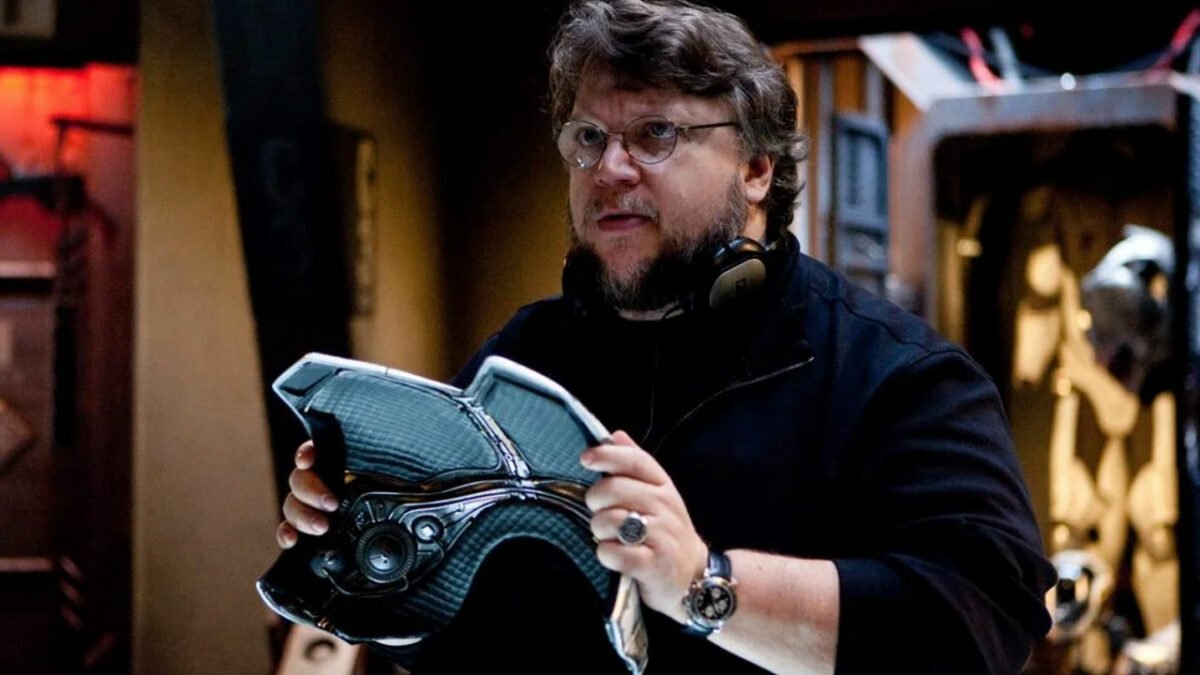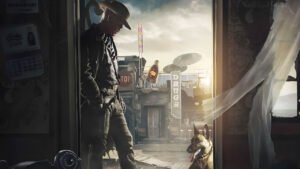Lifelong monster enthusiast Guillermo Del Toro is one of those lucky few people who can claim to be living their dream.
Born to a low income and highly religious family in Mexico, Del Toro took his childhood monster obsession from homemade Halloween costumes and rubber make up effects for Mexican TV all the way to becoming Hollywood’s current monster movie specialist.
With Oscar nominated prestige genre pictures like Pan’s Labyrinth and The Devil’s Backbone under his belt, along with a handful of Hollywood hits like Blade II and the Hellboy movies, Del Toro is one of those lucky few filmmakers whose name is a brand that can set a project in motion. This week Del Toro finally enters the $100 million blockbuster arena with Pacific Rim, a massive, giant monsters (or Kaiju) versus giant robots (or Jaegers) movie that just might be the most entertaining blockbuster of the summer. While it’s easily Del Toro’s most commercial movie to date, it’s also a personal one for the self-confessed fanboy-turned-filmmaker that mines his lifelong love of giant monster movies and anime for a popcorn munching mass audience. Comics & Gaming Magazine recently got a chance to chat with Del Toro just before the release of the biggest movie of his career (if not the summer as a whole) and dove into all of the small artistic decisions that added up to a big popcorn-munching blockbuster.
This article contains spoilers.
What was it about Travis Beacham’s initial treatment for Pacific Rim that got you on board and what did you bring to it as co-writer/director?
Guillermo Del Toro: Travis is a great idea guy and someone who imagines worlds that are defined by his writing. He develops a lexicon like “gypsy danger” or “martial tentacles.” He provides an instant Polaroid of a world that is very compelling. He did that in this, and he did that in Killing On Carnival Row. I had worked with him on Carnival Row for about a year and a half, so I knew him and I knew that we worked very well together. So, I came in, and I started suggesting stuff like the robots should have two pilots and they should be joined by a neural bridge. So, we worked on it, and I became the co-writer. When you’re co-writing, you’re at least sharing the work 50/50, and there’s a big influence of both of us on this movie.
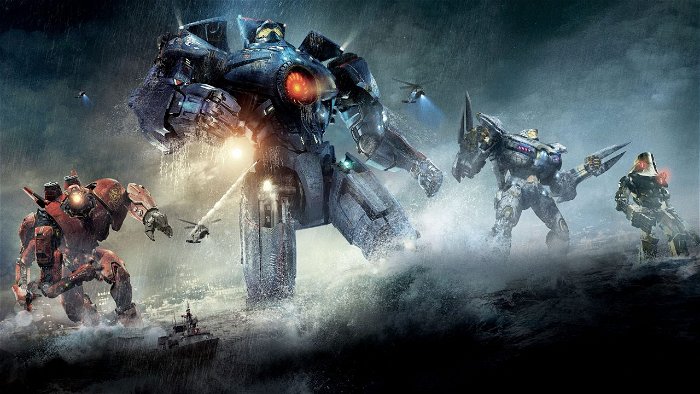
The battles are truly amazing. Was there one in particular you slaved over, or most proud of?
Guillermo Del Toro: Well, I shot the movie for five months and then I directed animation for nine months. When I say direct, I mean direct from the camera angle and lens choice, to how the actors move and the atmospherics. Directing animation is as much or more strenuous than live action because there are no accidents. It’s all very deliberate.
So I actually had two favorite scenes to direct in the movie. One was the scene with Mako as a child, which I think is of a piece with Pan’s Labyrinth. I thought it was as beautiful and evocative and all that. And the other sequence was something that we called ‘The Battle For Hong Kong,’ which starts with the first attack of the two kaijus and ends up about 25 minutes later in outer space (Laughs). That was pretty cool. So I loved that. Just to make a fight scene that lasts that long, but never feels repetitive and feels like it was part of the storytelling was very challenging.
In many of your previous movies you explore the relationship between man and monster, often presenting humans as far worse than your creatures. This movie seems a little more skewed the other way. Was that a challenge for a monster-loving gentleman like yourself?
Guillermo Del Toro: Well, first of all the beauty of the Kaiju films that were so ingrained in me as a kid is that there was no moralizing. With [Ghidora, The Three Headed Monster], I ended up leaving that movie liking Ghidora more than Godzilla even though Ghidora is theoretically the bad guy. Same with Godzilla Versus. Hedorah. I came out wanting every Hedorah toy I could get. I think the Kaiju are so immense that they transcend morality and become almost cosmological or elemental creatures. So, it’s almost like saying “Which tornado do you think is meaner?”
Well, all tornadoes are kind of mean and all tornados are kind of spectacular. The same macro logic applies to Kaiju. What I tried to do with the human characters is the same thing that I did with Hellboy 2 or The Devil’s Backbone. I created a character who was the bad guy in the beginning of the movie and then slowly show that he’s also human until hopefully at the end you also like him. So hopefully you come out thinking there’s no “me” and “you,” but just “us.” Together we stand and fall. I made a very conscious decision to make the bad guys of the piece little aliens who only want to consume. The little aliens who are there at the end.
Very purposefully, I made the robots at the end the Kaiju in reverse. The Jaeger comes in and goes, “Hey!” and the aliens are like, “Oh fuck! What is he doing on this side?” I hate consumerism and that instinct, so I wanted them to be the focal point of attack. The Kaijus are more like cats released into a world full of mice. They are there to crush the mice, but they don’t have much malice.
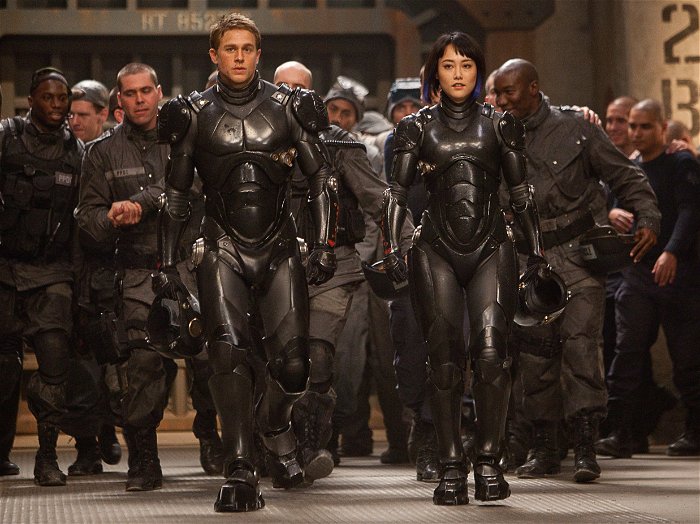
I was intrigued by the neural drift concept that allows two pilots to control the Jaegers together and opens up all sorts of themes of interpersonal connection. Was it important to you that the concept open up to those ideas and not just be a nuts n’ bolts concept describing how the machines work?
Guillermo Del Toro: The drift was something that I brought in when I started working on the movie. I didn’t just want one pilot, I wanted two because first of all, it’s a more interesting thing to shoot, and secondly, you could never say, “we don’t get along outside of the robot, but inside we get along.” You need to be able to drift. We could make a whole movie about the drift and balancing how much of that concept to explore was difficult.
We had about 48 minutes that I cut out because I really didn’t want this to be one of those summer movies that are two hours and 45 minutes long. Ultimately, when you buy a ticket what you want to see is the Kaiju and Jaegers beating the shit out of each other. So, I limited it to the concept of, “in order to let someone into your head, you have to trust them.” And that reveals the robot’s heart. It’s a simple arc, but it’s there, and there’s a nice little broth of ideas that spring from that.
I was impressed by how much world building you managed to do in the opening montage. How did you approach that to avoid the feeling of exposition?
Guillermo Del Toro: When people talk about screenplay and what makes a good screenplay, I think it’s like a car. It’s not just the body, engine, and wheels that matter. It’s everything. A screenplay is character, drama, plot, and information. When you can cram all that into two hours, you need to do an incredible balancing act for it to work. The two things that you do in a screenplay are creating and managing, and the managing is very difficult in a movie like this because there are so many rules that the audience needs to understand.
So what I did was front loaded the pseudo-documentary prologue. The first few images are in the style of the rest of the movie, the attack on San Francisco. Then for the pseudo-documentary I gave to my company to produce with plates shot everywhere in the world in a cheap way. It was important that it add a different feel than the rest of the movie that was more urgent and real. That’s how we crafted it. I received 300 plates from the company and then I added voice over and cut them down myself like you would a documentary until it was what you see in the film.
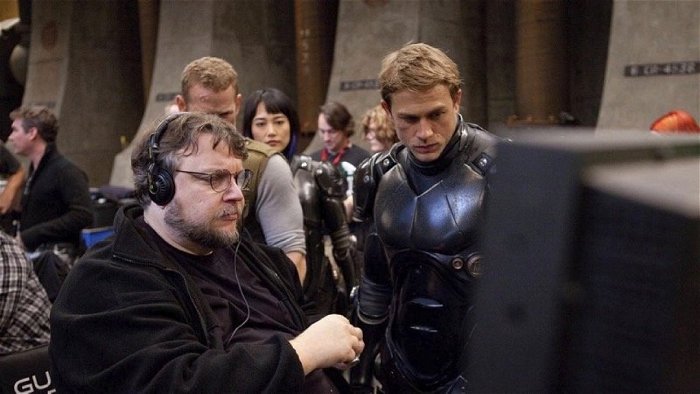
Even though it was all done in post, I was very impressed by the 3D. It’s easily the best I’ve seen in months if not years. So what was your approach to making that effect work even when you weren’t actually shooting in 3D?
Guillermo Del Toro: Well, the decision to do 3D was imposed on me. But the great advantage that I had is that if you look at my other movies, I shoot in a very 3D-friendly way. I always shoot in wide angle lenses, but this movie was three or four lenses removed from the usual. Also, if you look at the movie again, you’ll notice that there are very few close-ups.
A close-up in Pacific Rim is a two shot. Because things are huge and people are always in groups, so I didn’t want to isolate anyone. I always have people move in and out of the foreground in choreographed ways, so we were lucky in that everything we had already shot when we decided to go 3D was friendly to that process. So, what I told them was, “if you want 3D conversion, I want to make a very strong conversion that will impress people.” 3D is not about shit coming out of the screen, it’s about you going into the screen. It’s about depth and making the audience feel the depth of the screen.
“Then in January, I’m going to shoot Crimson Peak“
So we did two things: I asked for double the budget of a normal 3D conversion and assigned ILM to do 90% of their effects shots in native 3D. So most of the ILM shots were designed in 3D, not converted. On the live action side, normally you get 16-20 weeks to convert and in some horrible cases, 10 weeks. I asked for 47 weeks to convert the movie.
Normally a director gives the film to the 3D conversion house, waits a couple months, watches it once, makes a few notes and then lets it go. I started by having two meetings a week, then three, then four, and by the end we were meeting every day including Sunday. Every detail you see went through me. It’s a deal I have with the audience, saying “if you trust me to convert to 3D, I will do the best job possible.” And we never got cheesy. We never poked at you. My reluctance to 3D initially was that if things are that huge, there’s no visual parallax. I joked with ILM that “I paid you a fortune not to do 3D.” There is depth, but not conventional parallax because it would miniaturize everything. It was a very long complex process, but I’m pleased to hear it’s working.
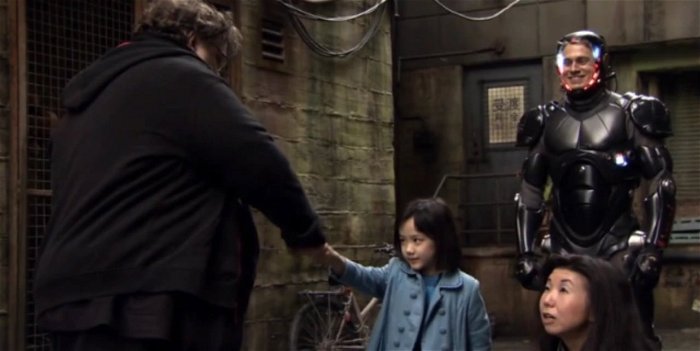
As always, you’ve got a big stack of future projects coming up. Is there one that you’d particularly rank above the others?
Guillermo Del Toro: Well, I already have my next two ready to shoot. In September, I’m going to shoot The Strain pilot for HBO in Toronto. Then in January, I’m going to shoot Crimson Peak. So those two are ready to go and will be reality… God willing (Laughs). I would still love to do Pinocchio, I would love to do Mountains Of Madness, I would love to do Count Of Monte Cristo. But you know, I own two houses full of monsters, but don’t have the kind of money to finance one of those projects. If I did, I would put all of my money into it, and I have in the past. If I had exactly the money to make Mountains Of Madness plus $100,000, I would go all in.
Would you ever try crowd-funding for something like that?
Guillermo Del Toro: I don’t think there’s enough crowd to fund that movie (Laughs). And honestly, I’m 48-years-old and I am in the film industry. If I can’t fund it through normal channels, I shouldn’t do it. Crowd-funding is great for first-time filmmakers. Leave that space to them. That’s my own personal point of view.

How is your Haunted Mansion project with Disney coming along?
Guillermo Del Toro: You know, we’ve been waiting for a writer for over a year and a half. Disney is very keen on this writer, and we’re waiting for his schedule to clear up. I’m anxious for it to get going, but they are adamant about using this writer. I love Haunted Mansion. It was born out of the clash of two sensibilities. By the time the haunted mansion opened, Disney was dead.
The mansion was birthed out of Mark Davis’ initial impulse of making it funny and then you have a different sensibility of making it scary. And then what happened at the end of the day is that Disney forced a balance between the funny with the scary. So there was a clash and it is the result of those two sensibilities. But the movie should be scary. It should be beautiful too. It’s a world you want to belong to. You really want to join the ghost. So if I direct it, it would be very close to those original concepts. We went back to the Disney archives. They opened their archives for us and we spent a day in the vault.
I’m sure you didn’t enjoy that at all.
Guillermo Del Toro: OH! I literally went through all of the concept art, used and unused by all the concept guys at Disney. I saw a lot of stuff that was unused at the mansion that was great and I saw a little bit of the basic coding of the thing. The color-coding that was used was very precise. I’m very excited, but as I said at this stage we’re just waiting on the writer to do a pass. It is still very active though.
